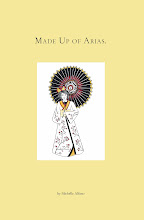Astray by Emma Donoghue (HarperColllins Ltd., 2012) 275 pages
This is an intriguing fictional cocktail ... a series of very short stories based on real life news and historical accounts of various men and women living in times as early as the early 17th c. and as recent as the late 1960s. Emma Donoghue couples the stories with a one or two page historical explanations of what inspired the stories. The book is divided into three sections “Departures”, “In Transit” and “Arrivals and Aftermaths".
In Donoghue's afterword she suggests that many of these stories are inspired by one's separation from one's roots whether that be a homeland or of a loved one. These people are often "astray', somewhat alienated from the people or places they love.
These are tales of woe and separation, deceit, betrayal,
thwarted lust and misplaced trust ... Donoghue, author of the sensational,
award winning Room and many other fine books such as Slammerkin, captures their voices so well, so
effortlessly. She writes evocatively and passionately in my favourite stories -
whether it is the slave who runs away with his white mistress after poisoning
his master ("Last Supper at Brown's"); the Irish immigrant dying of cholera in
Canada and sending his last few letters to his wife back in Ireland
("Counting the Days"); the first person narrative of Matthew Scott,
the caretaker of Jumbo, an elephant purchased by P.T. Barnum in the 1860s (the
charmingly told "Man and Boy"); a tale of a mother's loss and the orphan trains of the early 20th c. America ("The Gift"); the planned
entrapment and rape of a teenage girl by British forces during the American
Revolution (the disturbing tale "The Hunt"); or, the destitute mother
turned prostitute whose brother turns to the novelist Charles Dickens (yes, that Dickens) for
financial aid in sending his sister abroad to a new life ("Onward").
Where she sometimes falters (or perhaps it is I who faltered in my
appreciation) is in imitating the cowboy diction of the mid to late 19th
c. of America such as in the dialogue of the would-be smugglers of
Lincoln's corpse in "The Body Swap"; the cowgirl in "The Long Way Home"
who drags an errant husband back to his family against his will; or, the
Yukon prospectors in "Snowblind". The dialogue has a forced quality, a stagey quality.
She ends the collection with a heavy-handed piece on two Canadian sculptors Frances Loring and Florence Wyle - in a piece entitled “What Remains"- who
 |
| Emma Donoghue |
partnered to create many enormous monuments in mid century Canada, many of them created to memorialize the dead (a particularly fruitful period for sculptors post-WWII). The story of their life together is a beautiful one but the exposition is heavy handed in attempting to convey the enormous accomplishments of the women such as the creation of the “Loring Lion,” an art deco sculpture now exhibited in Sir Casimir Gzowski Park.
Donoghue is brilliantly inventive, working in a variety of genres (I have yet another Donoghue book on my bookshelf to read); however, I felt this collection felt a bit cobbled together with some superior offerings and some weak ones (almost all had been published in literary journals prior to this). Perhaps it was offered by Donoghue to her publisher in the overwhelming wake of the phenomenal Room to appease readers who wanted another Donoghue fix quickly.











No comments:
Post a Comment